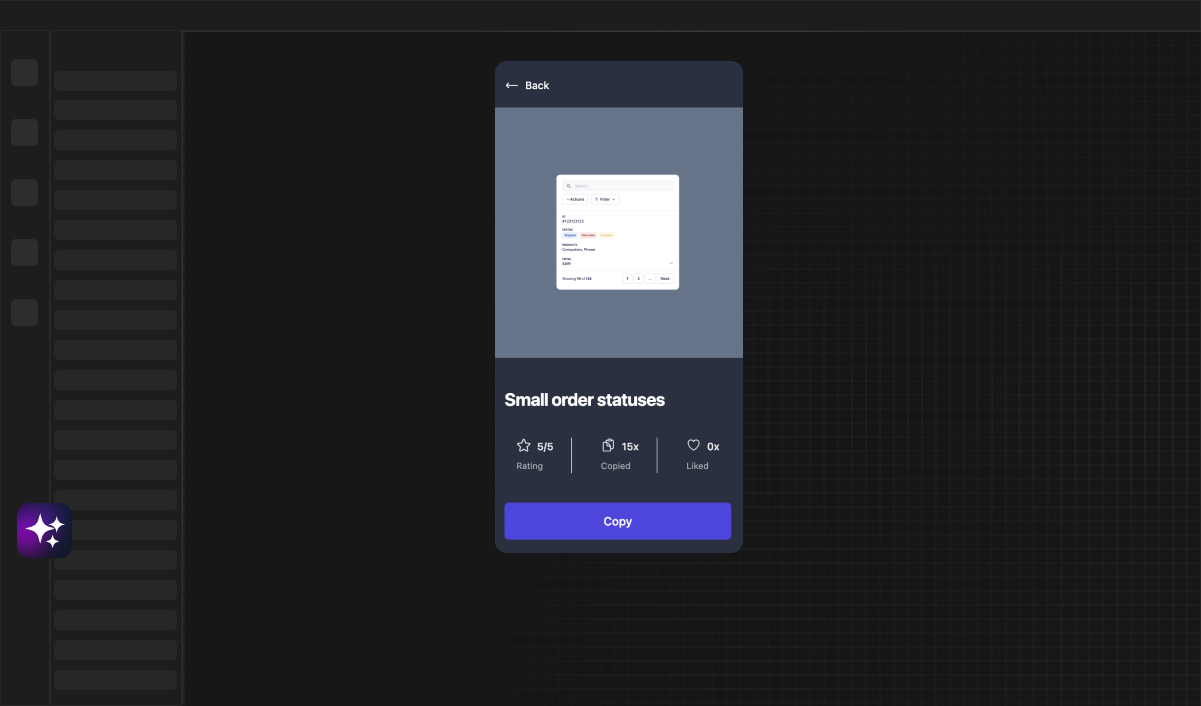
Web Developer
Backend Workflows in Bubble | Guide
Dive deep into the world of backend workflows in Bubble with our comprehensive guide. Learn how to set up, optimize, and scale your Bubble applications using powerful backend processes. Perfect for beginners and experts alike, this post is your roadmap to mastering backend automation in Bubble.
Understanding Backend Workflows in Bubble
What Are Backend Workflows?
Backend workflows in Bubble are like the hidden gears in a complex machine, working tirelessly behind the scenes. These processes allow your application to handle tasks without requiring direct user interaction, making them essential for automating various operations. By leveraging backend workflows, developers can execute logic that keeps an app running smoothly, updates data, and connects with other services seamlessly.
Key Benefits of Using Backend Workflows in Bubble
The advantages of employing backend workflows are manifold. They enhance the performance of your application by offloading work from the client-side, thus delivering a more responsive user experience. Backend workflows also allow for the automation of complex processes, which saves time and reduces the potential for errors. Plus, they can run scheduled tasks, handle bulk data operations, and interact with external APIs, making your Bubble app more powerful and versatile.
Setting Up Your First Backend Workflow
The Basics: Navigating Bubble's Workflow Interface
Getting started with backend workflows in Bubble is a breeze, thanks to its intuitive interface. Knowing where to click and what to configure is the first step in harnessing this powerful feature. The workflow editor in Bubble is where all the magic happens, and understanding it is crucial for any developer. It's where you'll define what your app does and when it does it, all without writing a single line of code.
Defining Triggers for Backend Workflows
Triggers are the starting point for any backend workflow. They are the conditions or events that kick-off your automated processes. In Bubble, you can set up triggers based on user actions, such as submitting a form or reaching a certain page, or time-based conditions, like a specific date and time. Defining these triggers correctly is essential to ensure that your backend workflows operate as intended.
Advanced Features of Bubble Backend Workflows
Scheduling and Recurring Events
One of the more sophisticated aspects of backend workflows is their ability to handle tasks at predetermined times or at regular intervals. This scheduling capability is incredibly useful for tasks like sending weekly newsletters, generating monthly reports, or updating records at the end of each day. Recurring events keep your application proactive and engaged with users, even when you're not actively managing it.
Backend Workflows with API Integration
Bubble's backend workflows can seamlessly interact with external APIs, extending the functionality of your app beyond its native capabilities. This feature enables your app to send data to and receive data from other services, opening up a world of possibilities for integration with popular third-party platforms and bespoke internal systems.
Utilizing Custom Events in Workflows
Custom events are a powerful feature within Bubble that allows you to create reusable workflow sequences. These can be triggered by other workflows, allowing you to modularize and streamline the logic in your application. By effectively using custom events, developers can keep their backend logic organized and maintainable.
Best Practices for Efficient Backend Workflows
Optimizing Workflow Performance
Performance is key when it comes to backend workflows. Optimizing the processes not only improves the speed of execution but also enhances the overall user experience. It's essential to keep workflows lean, avoiding unnecessary actions, and ensuring that data is being handled efficiently. This can involve batching operations, minimizing database interactions, and using conditions to prevent redundant processing.
Ensuring Security and Privacy in Workflows
With great power comes great responsibility, and this is especially true for backend workflows that handle sensitive data. Security and privacy should be at the forefront of any backend process design. This means implementing proper access controls, using secure data transfer methods, and respecting user privacy by managing data in accordance with regulations like the GDPR.
Debugging and Testing Backend Workflows
Even the most seasoned developers encounter bugs, and backend workflows in Bubble are no exception. It's vital to thoroughly test and debug your workflows to ensure they are performing correctly. Bubble provides tools to help with this process, including step-by-step workflow runs and detailed logs. Regular testing and vigilant debugging can save time and prevent issues in the live environment.
Use Cases: Backend Workflows in Action
Automating Data Processing
Backend workflows shine when it comes to automating data processing tasks. They can handle everything from sorting and filtering to complex calculations and database updates. By automating these processes, you free up valuable time and ensure that your data is always accurate and up-to-date.
Handling User Authentication and Management
Managing users is an integral part of most applications, and backend workflows can take care of many related tasks. From signing up new users and authenticating logins to resetting passwords and updating profiles, backend workflows can ensure a smooth and secure user experience.
Generating Reports and Notifications
Backend workflows can also be programmed to generate and distribute reports based on your app's data, providing valuable insights to users or administrators. Additionally, these workflows can be used to send out notifications, such as emails or push messages, keeping users engaged with timely and relevant information.
Integrating Third-Party Services with Backend Workflows
Connecting to External Databases
For applications that require access to external databases, backend workflows in Bubble can establish connections and perform operations on those databases. This capability allows for a seamless flow of information between your Bubble app and other systems, broadening the scope of what your app can accomplish.
Leveraging Webhooks for Real-Time Updates
Webhooks offer a method for different services to communicate with each other in real-time. By integrating webhooks into backend workflows, your Bubble app can react instantaneously to events happening outside of its environment. This opens doors to a more dynamic and responsive user experience.
Scaling Your Application with Robust Backend Workflows
Managing Heavy Traffic with Scalable Workflows
As your Bubble application grows, it’s crucial to ensure that your backend workflows can handle increasing loads. Scalable workflows are designed to grow with your user base, maintaining performance and reliability. It's about building efficient processes that can handle more data, users, and interactions without degrading the user experience.
Tips for Upgrading and Maintaining Backend Systems
Maintaining and upgrading your backend systems is a continuous process. As Bubble evolves and your application's needs change, you’ll need to adapt your workflows accordingly. Keeping your systems updated with the latest best practices and technologies will ensure longevity and continued success for your app.
Learning Resources and Support for Bubble Backend Workflows
Official Documentation and Tutorials
Whether you're new to Bubble or a seasoned pro, there's always something to learn. The official Bubble documentation and tutorials are excellent resources for expanding your knowledge of backend workflows. They provide in-depth insights and step-by-step instructions that are invaluable for developers of all levels.
Community Forums and Expert Advice
The Bubble community is vibrant and supportive, with forums full of developers willing to share their experiences and advice. If you’re ever stuck or need some inspiration, these forums are a treasure trove of information. You can also find experts who offer one-on-one coaching or advice for more complex challenges.
Conclusion: Unlocking the Full Potential of Bubble's Backend Workflows
Summary of the Guide
By now, you should have a solid understanding of Bubble's backend workflows and the incredible power they hold. We've explored their benefits, how to set them up, and the best practices for keeping them running smoothly. Remember to leverage their capabilities to automate tasks, integrate with external services, and scale your app efficiently.
Next Steps for Mastering Backend Workflows in Bubble
The journey to mastering backend workflows in Bubble continues with practice and exploration. Keep experimenting with different features, learning from the Bubble community, and applying what you've learned to your projects. With each workflow you build, you'll be one step closer to unlocking the full potential of your Bubble application.



